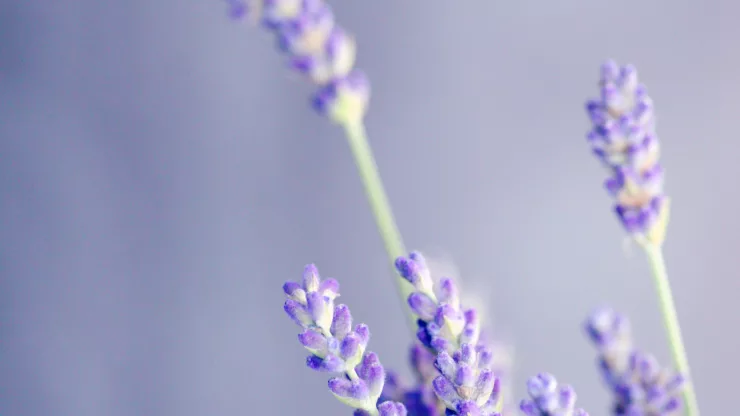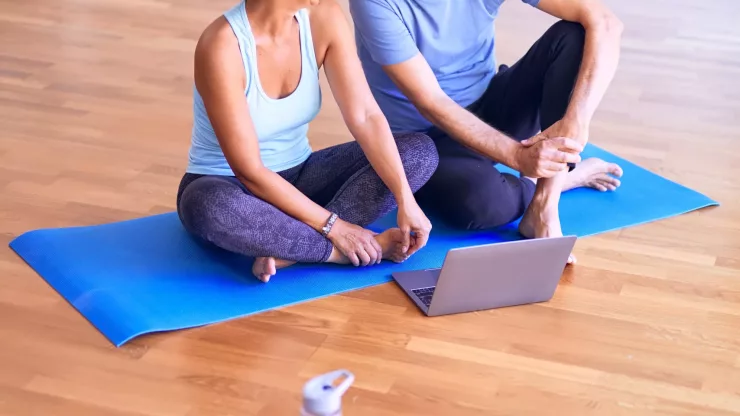In today’s fast-paced and chaotic world, finding inner peace has become more important than ever.
With the constant demands and pressures of daily life, it’s easy to feel overwhelmed and disconnected from ourselves.
However, cultivating a sense of serenity and tranquility within can have transformative effects on our overall well-being.
In this article, we will explore the concept of inner peace, its benefits, and practical strategies for finding serenity in our daily lives.
Jump to Section
The Importance of Inner Peace in Today’s Hectic World
In our modern society, stress, anxiety, and burnout have become all too common. The constant hustle and bustle can leave us feeling drained and disconnected from our true selves.
This is where inner peace comes in. Inner peace is a state of calmness, contentment, and harmony within oneself, regardless of external circumstances.
It provides a solid foundation for navigating life’s challenges and finding joy in the present moment.
How Finding Serenity Can Transform Your Life
When we cultivate inner peace, we unlock the power to transform our lives.
It allows us to approach challenges with clarity and resilience, make better decisions, and nurture healthier relationships.
Inner peace also enhances our overall well-being by reducing stress, improving mental health, and boosting our immune system.
By finding serenity, we can experience a greater sense of fulfillment, purpose, and happiness in our lives.
Understanding the Concept of Inner Peace
Defining Inner Peace: What Does it Really Mean?
Inner peace is a deeply personal experience that can be challenging to define.
It encompasses a sense of tranquility, acceptance, and balance within oneself.
It is not the absence of challenges or negative emotions, but rather the ability to navigate them with grace and equanimity.
Inner peace is about finding harmony between our thoughts, emotions, and actions, and aligning ourselves with our true values and purpose.
Exploring the Benefits of Cultivating Inner Peace
Cultivating inner peace has numerous benefits for our overall well-being. It reduces stress and anxiety, improves sleep quality, and enhances our ability to focus and concentrate.
Inner peace also promotes emotional well-being, leading to greater happiness, self-confidence, and resilience. It strengthens our relationships by fostering better communication, empathy, and understanding.
Additionally, inner peace has a positive impact on our physical health, boosting our immune system and reducing the risk of chronic illnesses.
The Journey to Inner Peace: Where to Begin
Embarking on the journey to inner peace requires commitment, self-reflection, and a willingness to let go of what no longer serves us. Here are some strategies to help you start your path towards serenity:
Letting Go of Negative Emotions and Thoughts
One of the first steps towards inner peace is learning to let go of negative emotions and thoughts that weigh us down. This can be achieved through practices such as journaling, mindfulness, and therapy.
By acknowledging and releasing these emotions, we create space for more positive and empowering thoughts to emerge.
Embracing Mindfulness and Meditation Practices
Mindfulness and meditation practices are powerful tools for cultivating inner peace. They help us become more aware of the present moment, allowing us to let go of worries about the past or future.
Regular meditation practice can calm the mind, reduce stress, and increase our capacity for self-reflection and self-awareness.
Nurturing Self-Compassion and Acceptance
Self-compassion and acceptance are essential components of inner peace.
By treating ourselves with kindness, understanding, and forgiveness, we create a nurturing environment for growth and healing.
Embracing our imperfections and accepting ourselves as we are allows us to experience greater peace and self-love.
Strategies for Finding Inner Peace in Daily Life
While the journey to inner peace is ongoing, there are practical strategies we can incorporate into our daily lives to promote serenity:
Creating a Calming Daily Routine
Establishing a calming daily routine can help create a sense of stability and peace. This can include activities such as meditation, yoga, journaling, or spending time in nature.
By prioritizing these practices, we create space for introspection, relaxation, and self-care.
Practicing Gratitude and Positive Affirmations
Cultivating gratitude and positive affirmations can shift our focus towards the present moment and foster a sense of inner peace. Taking time each day to reflect on the things we are grateful for and affirming positive beliefs about ourselves can have a profound impact on our overall well-being.
Cultivating Healthy Relationships and Boundaries
Healthy relationships and boundaries are vital for maintaining inner peace.
Surrounding ourselves with supportive and positive individuals who uplift and inspire us can contribute to our overall sense of well-being.
Setting boundaries and prioritizing our own needs allows us to protect our energy and maintain a sense of inner peace.
The Role of Self-Care in Achieving Inner Peace
Self-care is a crucial aspect of cultivating inner peace. It involves prioritizing our physical, mental, and emotional well-being.
Here are some key elements of self-care:
Prioritizing Physical and Mental Well-being
Taking care of our physical and mental health is essential for finding inner peace. This includes regular exercise, nourishing our bodies with healthy food, getting enough sleep, and seeking professional help when needed.
By prioritizing our well-being, we create a solid foundation for inner peace to flourish.
The Power of Rest and Relaxation
Rest and relaxation are essential for replenishing our energy and finding inner peace. This can include activities such as taking breaks, practicing relaxation techniques, engaging in hobbies, or simply spending time in quiet contemplation.
By allowing ourselves to rest, we recharge our minds and bodies, fostering a greater sense of peace and well-being.
Nourishing Your Body and Mind through Healthy Habits
Engaging in healthy habits such as practicing good hygiene, staying hydrated, and engaging in activities that bring us joy and fulfillment can contribute to our overall sense of well-being. By nourishing our bodies and minds, we create a supportive environment for inner peace to thrive.
Exploring Different Paths to Inner Peace
There are many paths to inner peace, and what resonates with one person may not resonate with another. Here are some different approaches to finding serenity:
The Wisdom of Ancient Philosophies and Spiritual Traditions
Ancient philosophies and spiritual traditions offer valuable insights and practices for cultivating inner peace. These can include teachings from Buddhism, Taoism, Stoicism, and various indigenous wisdom traditions.
Exploring these traditions can provide profound wisdom and guidance on the path to inner peace.
Integrating Eastern and Western Approaches to Inner Peace
Integrating Eastern and Western approaches to inner peace allows us to draw from a diverse range of practices and philosophies.
This can include combining mindfulness meditation with cognitive-behavioral therapy or incorporating yoga and breathwork into our daily routines.
By integrating different approaches, we can create a personalized path to inner peace that resonates with our unique needs and preferences.
Comparing Different Meditation Techniques for Inner Peace
Meditation is a powerful practice for cultivating inner peace, and there are various techniques to explore. Here is a comparison of different meditation techniques:
| Technique | Description |
|---|---|
| Mindfulness Meditation | Focuses on non-judgmental awareness of the present moment and one’s sensations |
| Loving-Kindness Meditation | Involves cultivating feelings of love, compassion, and kindness towards oneself and others |
| Transcendental Meditation | Involves the use of a mantra to achieve a state of deep relaxation and inner peace |
| Guided Visualization Meditation | Involves visualizing peaceful and calming scenes to promote relaxation and inner peace |
Overcoming Obstacles on the Path to Inner Peace
The path to inner peace is not always smooth, and obstacles may arise along the way. Here are some strategies for overcoming common obstacles:
Dealing with Stress and Anxiety
Stress and anxiety can disrupt our sense of inner peace.
To overcome these obstacles, it is important to develop healthy coping mechanisms such as deep breathing exercises, engaging in physical activity, seeking support from loved ones, or practicing relaxation techniques.
By managing stress and anxiety, we create space for inner peace to thrive.
Overcoming Self-Doubt and Negative Self-Talk
Self-doubt and negative self-talk can hinder our journey towards inner peace. To overcome these obstacles, it is important to cultivate self-compassion, challenge negative thoughts, and practice positive affirmations.
By replacing self-doubt with self-empowerment, we create a nurturing environment for inner peace to flourish.
Strategies for Letting Go of Past Hurts and Forgiving Others
Letting go of past hurts and forgiving others is a crucial step towards inner peace. Strategies for letting go and forgiveness include practicing empathy, reframing the narrative, seeking closure, and engaging in forgiveness exercises.
By releasing the weight of past grievances, we free ourselves to experience greater peace and emotional freedom.
Cultivating Inner Peace in a Chaotic World
Finding inner peace in a chaotic world can be challenging, but it is possible. Here are some strategies for cultivating serenity amidst the chaos:
Finding Balance in the Midst of a Busy Lifestyle
Finding balance is key to cultivating inner peace in a busy lifestyle. This can involve setting boundaries, prioritizing self-care, and creating a healthy work-life balance. By finding equilibrium between our responsibilities and our personal well-being, we create space for inner peace to thrive.
Creating Sacred Spaces for Reflection and Solitude
Creating sacred spaces in our lives allows us to find moments of reflection and solitude.
This can be a physical space in our homes, a peaceful outdoor setting, or even a quiet corner in a bustling city.
By carving out time and space for ourselves, we can reconnect with our inner selves and find solace in the present moment.
Incorporating Mindfulness into Everyday Activities
Incorporating mindfulness into our everyday activities is a powerful way to cultivate inner peace. This can involve bringing awareness to simple tasks such as eating, walking, or washing dishes.
By fully immersing ourselves in the present moment, we can find peace and joy in even the most mundane activities.
The Ripple Effect of Inner Peace: Spreading Harmony to Others
Inner peace not only benefits ourselves but also has a ripple effect on those around us. Here are some ways in which inner peace can spread harmony to others:
Cultivating Compassion and Empathy
Inner peace fosters compassion and empathy towards others. By cultivating these qualities, we can better understand and connect with those around us.
Acts of kindness and understanding can create a ripple effect of positivity and harmony in our relationships and communities.
Building Stronger Connections and Relationships
Inner peace enhances our ability to build stronger connections and relationships.
By being present, listening actively, and practicing open-hearted communication, we can foster deeper connections with others.
Stronger relationships contribute to a sense of belonging and support, promoting inner peace for all involved.
Acts of Kindness: How Small Gestures Can Make a Big Difference
Acts of kindness, no matter how small, have the power to make a big difference in someone’s life.
By extending kindness to others, we not only bring them joy but also experience a sense of fulfillment and connection.
Acts of kindness can create a positive ripple effect, spreading inner peace and harmony throughout our communities.
Embracing Imperfection: The Key to Lasting Inner Peace
Embracing imperfection is a crucial aspect of finding lasting inner peace. Here are some tips for embracing imperfections and finding joy in the present moment:
Letting Go of Perfectionism and Unrealistic Expectations
Perfectionism and unrealistic expectations can prevent us from experiencing inner peace. By letting go of the need to be perfect and embracing our imperfections, we free ourselves from unnecessary stress and self-criticism.
Accepting ourselves as we are allows us to find joy and peace in the present moment.
Embracing Self-Acceptance and Self-Love
Self-acceptance and self-love are essential for finding lasting inner peace. By embracing ourselves with all our flaws and strengths, we cultivate a deep sense of self-worth and contentment.
Embracing self-acceptance and self-love allows us to experience inner peace regardless of external circumstances.
Tips for Embracing Imperfections and Finding Joy in the Present Moment
- Practice self-compassion and self-care regularly
- Embrace mistakes as opportunities for growth and learning
- Focus on the present moment and savor the simple pleasures of life
- Surround yourself with supportive and positive people
- Let go of comparisons and embrace your unique journey
The Power of Inner Peace: Transforming Your Life and the World
Inner peace has the power to transform not only our individual lives but also the world around us. Here are some ways in which inner peace can create positive change:
Finding Meaning and Purpose in Life
Inner peace allows us to connect with our true purpose and find meaning in our lives.
By aligning ourselves with our values and passions, we can make choices that bring us fulfillment and contribute to the greater good.
Finding meaning and purpose brings a profound sense of inner peace and contentment.
Inner Peace as a Catalyst for Personal Growth and Fulfillment
Inner peace serves as a catalyst for personal growth and fulfillment.
It provides the foundation for self-reflection, self-improvement, and the pursuit of our dreams.
By cultivating inner peace, we unlock our full potential and experience a deep sense of fulfillment in all areas of our lives.
Conclusion
The journey to inner peace is a lifelong endeavor, but the rewards are immeasurable.
By cultivating serenity within ourselves, we can navigate life’s challenges with grace, find joy in the present moment, and create positive change in our lives and the world around us.
Embrace the path to inner peace and unlock the transformative power it holds for your life.

With a deep passion for personal development, Ben has dedicated his career to inspiring and guiding others on their journey towards self-improvement.
His love for learning and sharing knowledge about personal growth strategies, mindfulness, and goal-setting principles has led him to create My Virtual Life Coach.
Contact Ben at [email protected] for assistance.




